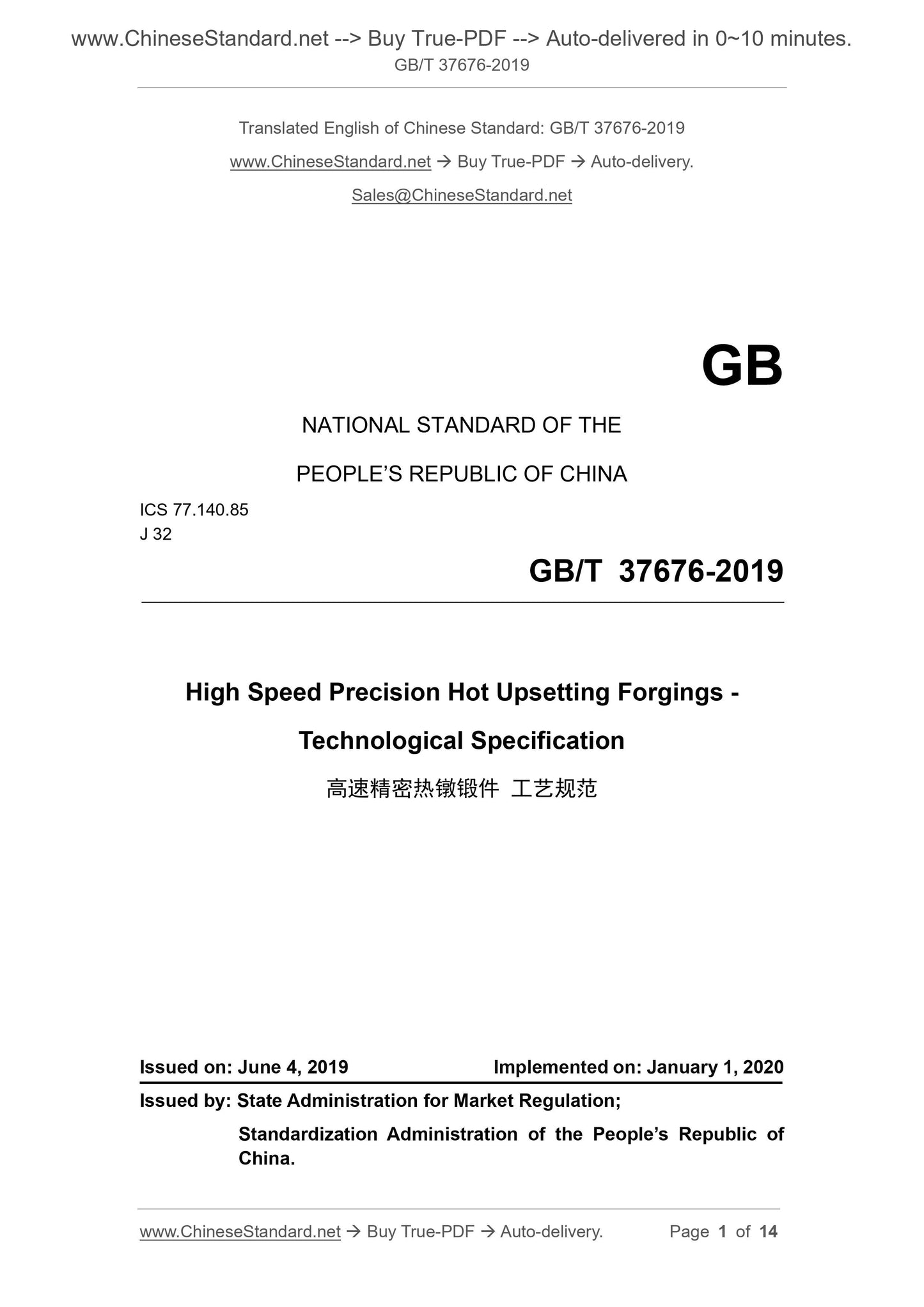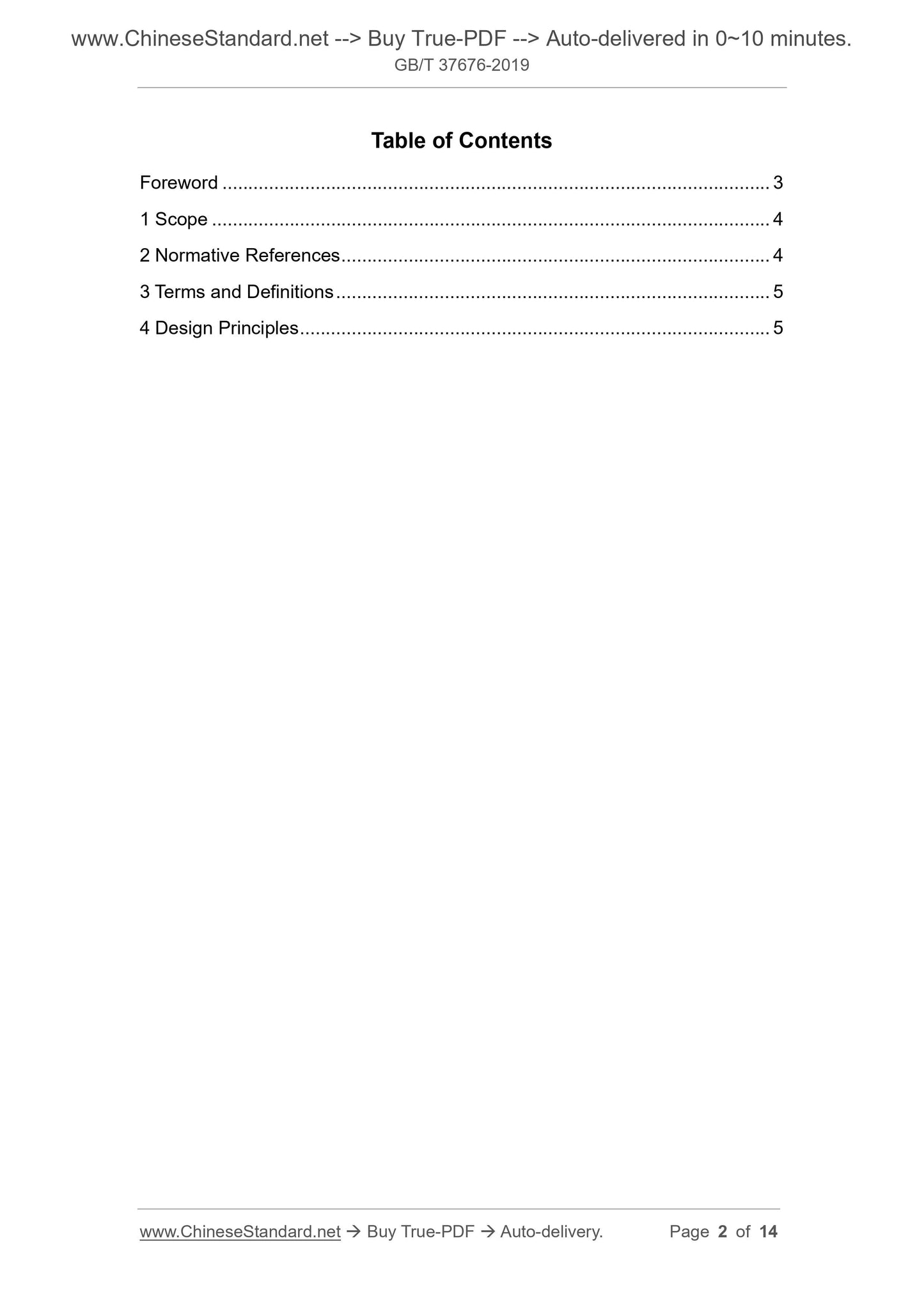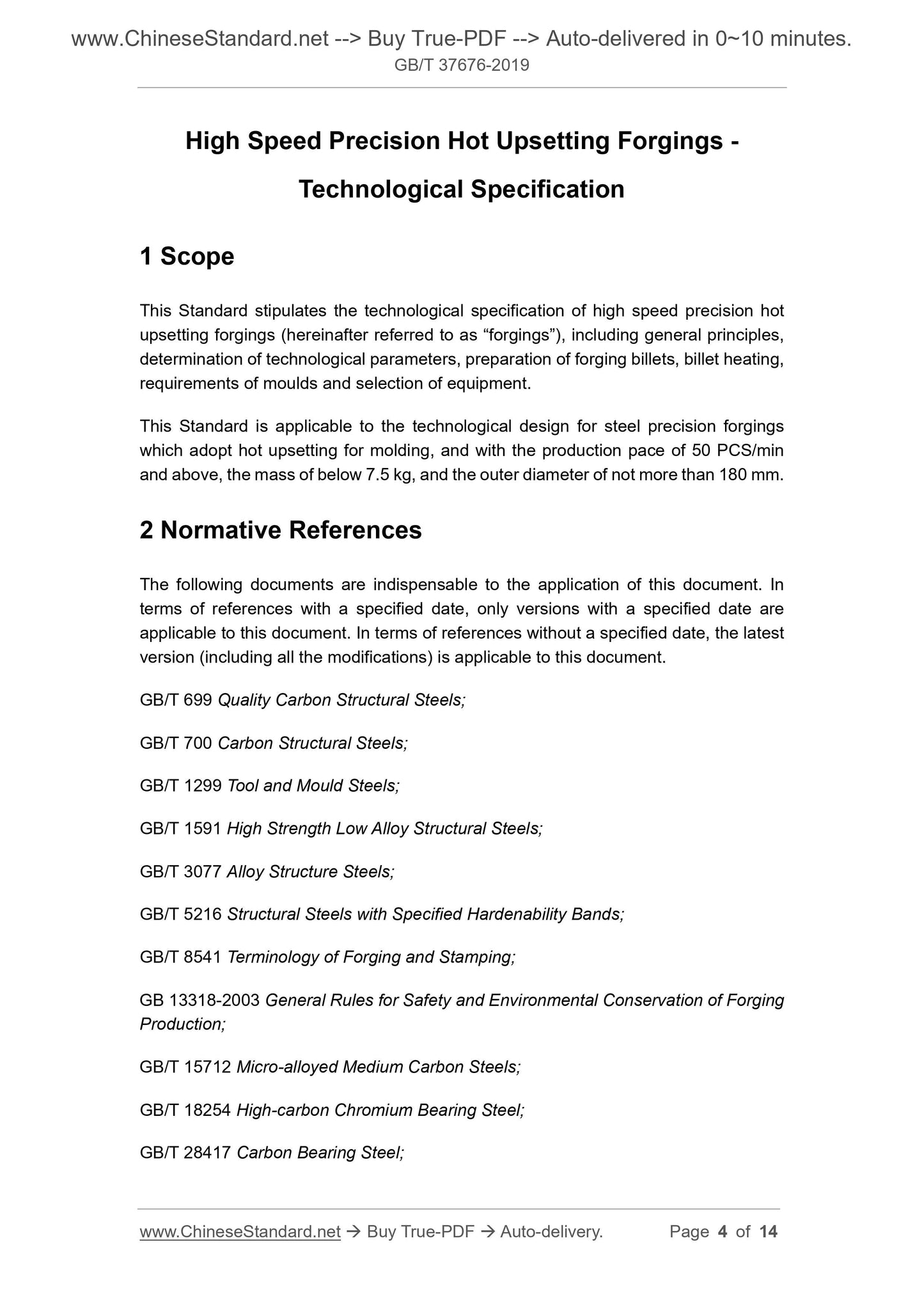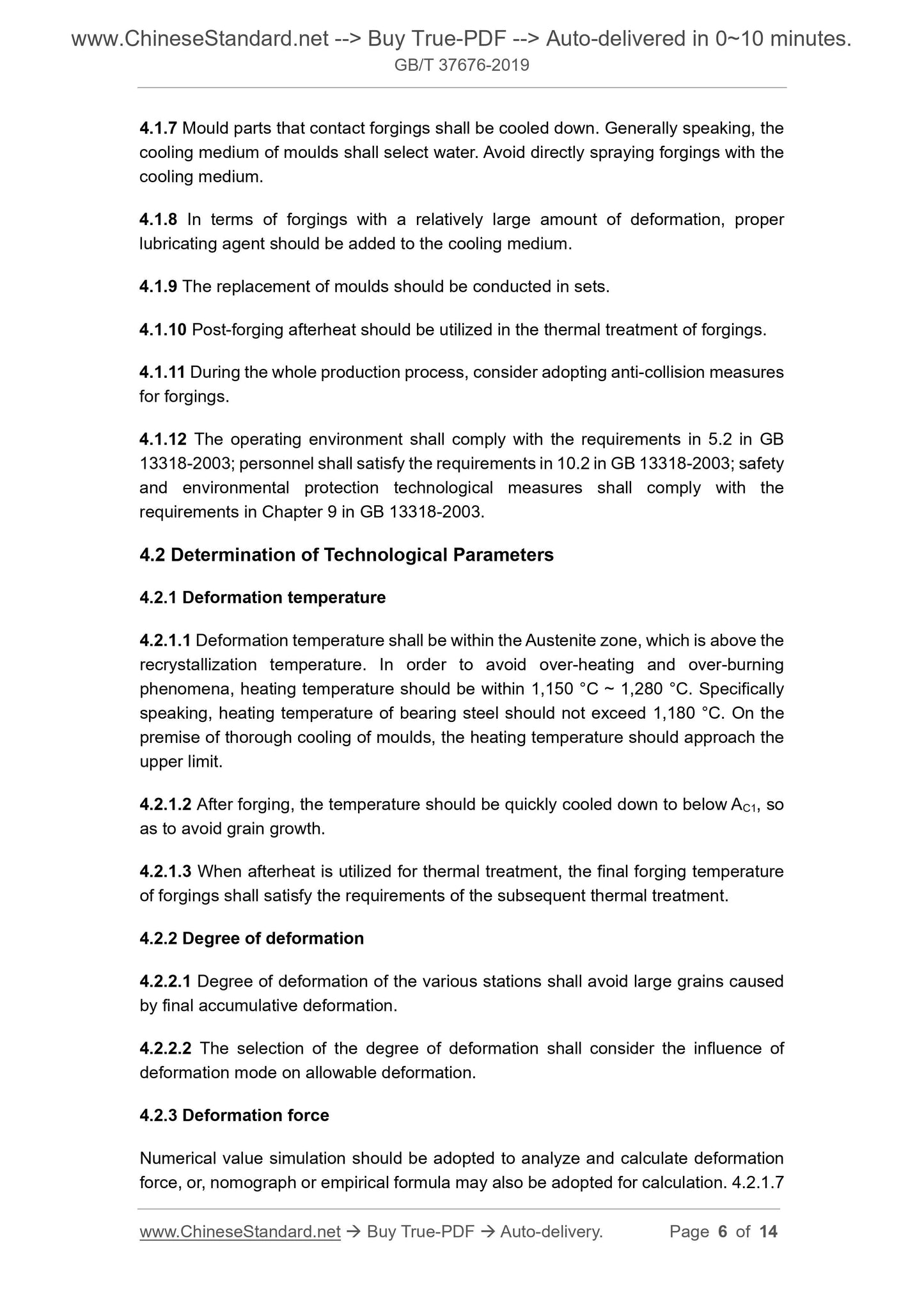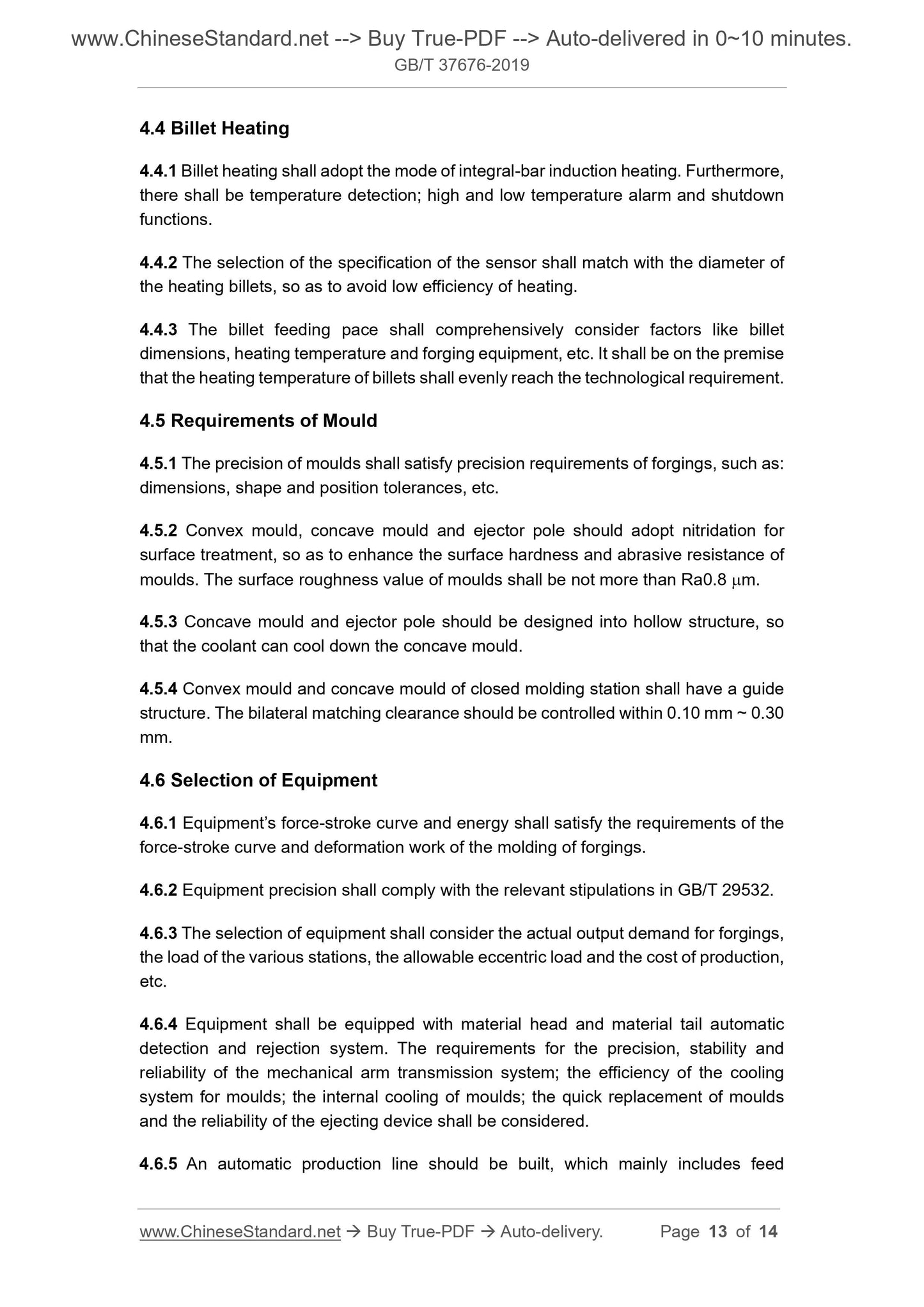1
/
of
5
www.ChineseStandard.us -- Field Test Asia Pte. Ltd.
GB/T 37676-2019 English PDF (GB/T37676-2019)
GB/T 37676-2019 English PDF (GB/T37676-2019)
Regular price
$150.00
Regular price
Sale price
$150.00
Unit price
/
per
Shipping calculated at checkout.
Couldn't load pickup availability
GB/T 37676-2019: High Speed Precision Hot Upsetting Forgings - Technological Specification
Delivery: 9 seconds. Download (and Email) true-PDF + Invoice.Get Quotation: Click GB/T 37676-2019 (Self-service in 1-minute)
Newer / historical versions: GB/T 37676-2019
Preview True-PDF
Scope
This Standard stipulates the technological specification of high speed precision hotupsetting forgings (hereinafter referred to as “forgings”), including general principles,
determination of technological parameters, preparation of forging billets, billet heating,
requirements of moulds and selection of equipment.
This Standard is applicable to the technological design for steel precision forgings
which adopt hot upsetting for molding, and with the production pace of 50 PCS/min
and above, the mass of below 7.5 kg, and the outer diameter of not more than 180 mm.
Basic Data
| Standard ID | GB/T 37676-2019 (GB/T37676-2019) |
| Description (Translated English) | High Speed Precision Hot Upsetting Forgings - Technological Specification |
| Sector / Industry | National Standard (Recommended) |
| Classification of Chinese Standard | J32 |
| Classification of International Standard | 77.140.85 |
| Word Count Estimation | 10,173 |
| Date of Issue | 2019-06-04 |
| Date of Implementation | 2020-01-01 |
| Issuing agency(ies) | State Administration for Market Regulation, China National Standardization Administration |
Share
